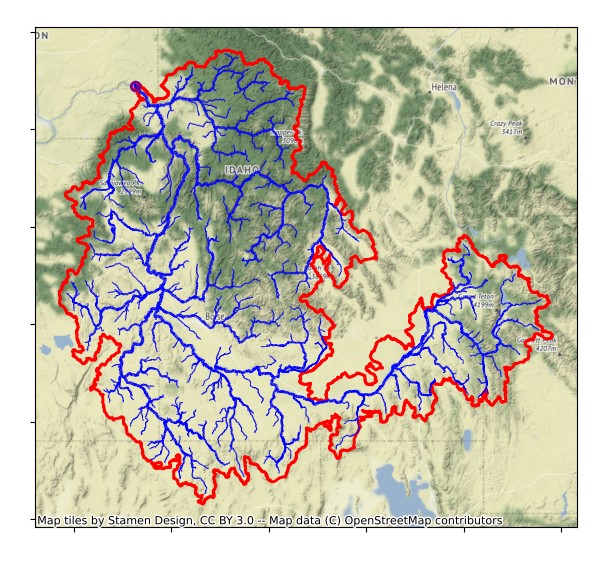It seems that a few people are discovering the mghydro watershed delineation API. Last Monday, the API handled requests for 9,679 watersheds over the course of a few hours. (Someone is very interested in the watersheds of France!)
One way to use the API is with GIS software, to fetch watershed boundaries and river centerlines from the web app and display them in your desktop GIS. Another use is to automate your requests, rather than using the online map interface. This could be useful if you want to delineate hundreds (or thousands!) of watersheds. However, remember that the results of automated delineation are very often wrong, so you should visually check each one.
Here is a demo in Python of how you could use the API to download watersheds for multiple outlet points. Click on the filename at the bottom to go to Github, where you can download the Jupyter notebook.

